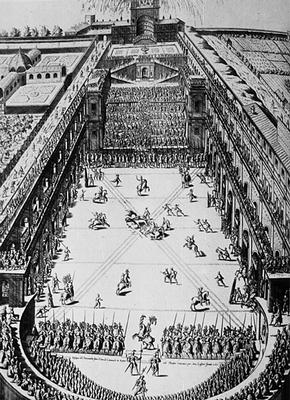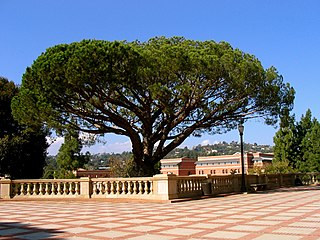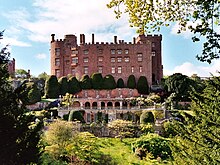
A garden is a planned space, usually outdoors, set aside for the cultivation, display, and enjoyment of plants and other forms of nature. The single feature identifying even the wildest wild garden is control. The garden can incorporate both natural and artificial materials.

The early history of gardening is largely entangled with the history of agriculture, with gardens that were mainly ornamental generally the preserve of the elite until quite recent times. Smaller gardens generally had being a kitchen garden as their first priority, as is still often the case.

A roof garden is a garden on the roof of a building. Besides the decorative benefit, roof plantings may provide food, temperature control, hydrological benefits, architectural enhancement, habitats or corridors for wildlife, recreational opportunities, and in large scale it may even have ecological benefits. The practice of cultivating food on the rooftop of buildings is sometimes referred to as rooftop farming. Rooftop farming is usually done using green roof, hydroponics, aeroponics or air-dynaponics systems or container gardens.

A parterre is a part of a formal garden constructed on a level substrate, consisting of symmetrical patterns, made up by plant beds, plats, low hedges or coloured gravels, which are separated and connected by paths. Typically it was the part of the garden nearest the house, perhaps after a terrace. The view of a parterre from inside the house, especially from the upper floors, was a major consideration in its design. The word "parterre" was and is used both for the whole part of the garden containing parterres and for each individual section between the "alleys".

In agriculture, a terrace is a piece of sloped plane that has been cut into a series of successively receding flat surfaces or platforms, which resemble steps, for the purposes of more effective farming. This type of landscaping is therefore called terracing. Graduated terrace steps are commonly used to farm on hilly or mountainous terrain. Terraced fields decrease both erosion and surface runoff, and may be used to support growing crops that require irrigation, such as rice. The Rice Terraces of the Philippine Cordilleras have been designated as a UNESCO World Heritage Site because of the significance of this technique.

A penthouse is an apartment or unit on the highest floor of an apartment building, condominium, hotel, or tower. Penthouses are typically differentiated from other apartments by luxury features. The term 'penthouse' originally referred, and sometimes still does refer, to a separate smaller 'house' that was constructed on the roof of an apartment building. Architecturally it refers specifically to a structure on the roof of a building that is set back from its outer walls. These structures do not have to occupy the entire roof deck. Recently, luxury high rise apartment buildings have begun to designate multiple units on the entire top residential floor or multiple higher residential floors including the top floor as penthouse apartments, and outfit them to include ultra-luxury fixtures, finishes, and designs which are different from all other residential floors of the building. These penthouse apartments are not typically set back from the building’s outer walls, but are instead flush with the rest of the building and simply differ in size, luxury, and consequently price. High-rise buildings can also have structures known as mechanical penthouses that enclose machinery or equipment such as the drum mechanisms for an elevator.

The Katsura Imperial Villa, or Katsura Detached Palace, is an Imperial residence with associated gardens and outbuildings in the western suburbs of Kyoto, Japan. Located on the western bank of the Katsura River in Katsura, Nishikyō-ku, the Villa is 8km distant from the main Kyoto Imperial Palace. The villa and gardens are nationally recognized as an Important Cultural Property of Japan.
Garden design is the art and process of designing and creating plans for layout and planting of gardens and landscapes. Garden design may be done by the garden owner themselves, or by professionals of varying levels of experience and expertise. Most professional garden designers have some training in horticulture and the principles of design. Some are also landscape architects, a more formal level of training that usually requires an advanced degree and often a state license. Amateur gardeners may also attain a high level of experience from extensive hours working in their own gardens, through casual study, serious study in Master gardener programs, or by joining gardening clubs.

The Fort Worth Japanese Garden is a 7.5-acre (3.0 ha) Japanese Garden in the Fort Worth Botanic Garden. The garden was built in 1973 and many of the plants and construction materials were donated by Fort Worth's sister city Nagaoka, Japan. Attractions at the garden include a zen garden, a moon viewing (tsukimi) deck, waterfalls, cherry trees, Japanese maples, a pagoda, and fishfood dispensers to feed the hundreds of koi in the Japanese Garden's three ponds. The garden hosts two annual events, the Spring Festival and the Fall Festival, featuring demonstrations of Japanese art and culture.

Container gardening or pot gardening/farming is the practice of growing plants, including edible plants, exclusively in containers instead of planting them in the ground. A container in gardening is a small, enclosed and usually portable object used for displaying live flowers or plants. It may take the form of a pot, box, tub, basket, tin, barrel or hanging basket.

Roman gardens and ornamental horticulture became highly developed under Roman civilization, and thrived from 150 BC to 350 AD. The Gardens of Lucullus, on the Pincian Hill in Rome, introduced the Persian garden to Europe around 60 BC. It was seen as a place of peace and tranquillity, a refuge from urban life, and a place filled with religious and symbolic meaning. As Roman culture developed and became increasingly influenced by foreign civilizations, the use of gardens expanded.

The Cortile del Belvedere was a major architectural work of the High Renaissance at the Vatican Palace in Rome. Designed by Donato Bramante from 1505 onward, its concept and details reverberated in courtyard design, formalized piazzas and garden plans throughout Western Europe. Conceived as a single enclosed space, the long Belvedere court connected the Vatican Palace with the Villa Belvedere in a series of terraces connected by stairs, and was contained on its sides by narrow wings.

A terrace is an external, raised, open, flat area in either a landscape near a building, or as a roof terrace on a flat roof.

Villa Terrace is a historic house in Milwaukee, Wisconsin. It was built in 1924 for the Lloyd R. Smith family - an Italian Renaissance-style home on a bluff above Lake Michigan. Since 1966 the house and grounds have housed the Villa Terrace Decorative Arts Museum. It is listed on the National Register of Historic Places as Lloyd R. Smith House.
Grading in civil engineering and landscape architectural construction is the work of ensuring a level base, or one with a specified slope, for a construction work such as a foundation, the base course for a road or a railway, or landscape and garden improvements, or surface drainage. The earthworks created for such a purpose are often called the sub-grade or finished contouring.

The Italian Renaissance garden was a new style of garden which emerged in the late 15th century at villas in Rome and Florence, inspired by classical ideals of order and beauty, and intended for the pleasure of the view of the garden and the landscape beyond, for contemplation, and for the enjoyment of the sights, sounds and smells of the garden itself.

Italian garden typically refers to a style of gardens, wherever located, reflecting a number of large Italian Renaissance gardens which have survived in something like their original form. In the history of gardening, during the Renaissance, Italy had the most advanced and admired gardens in Europe, which greatly influenced other countries, especially the French formal garden and Dutch gardens and, mostly through these, gardens in Britain.

The Baroque garden was a style of garden based upon symmetry and the principle of imposing order on nature. The style originated in the late-16th century in Italy, in the gardens of the Vatican and the Villa Borghese gardens in Rome and in the gardens of the Villa d'Este in Tivoli, and then spread to France, where it became known as the jardin à la française or French formal garden. The grandest example is found in the Gardens of Versailles designed during the 17th century by the landscape architect André Le Nôtre for Louis XIV. In the 18th century, in imitation of Versailles, very ornate Baroque gardens were built in other parts of Europe, including Germany, Austria, Spain, and in Saint-Petersburg, Russia. In the mid-18th century the style was replaced by the less geometric and more natural English landscape garden.

















